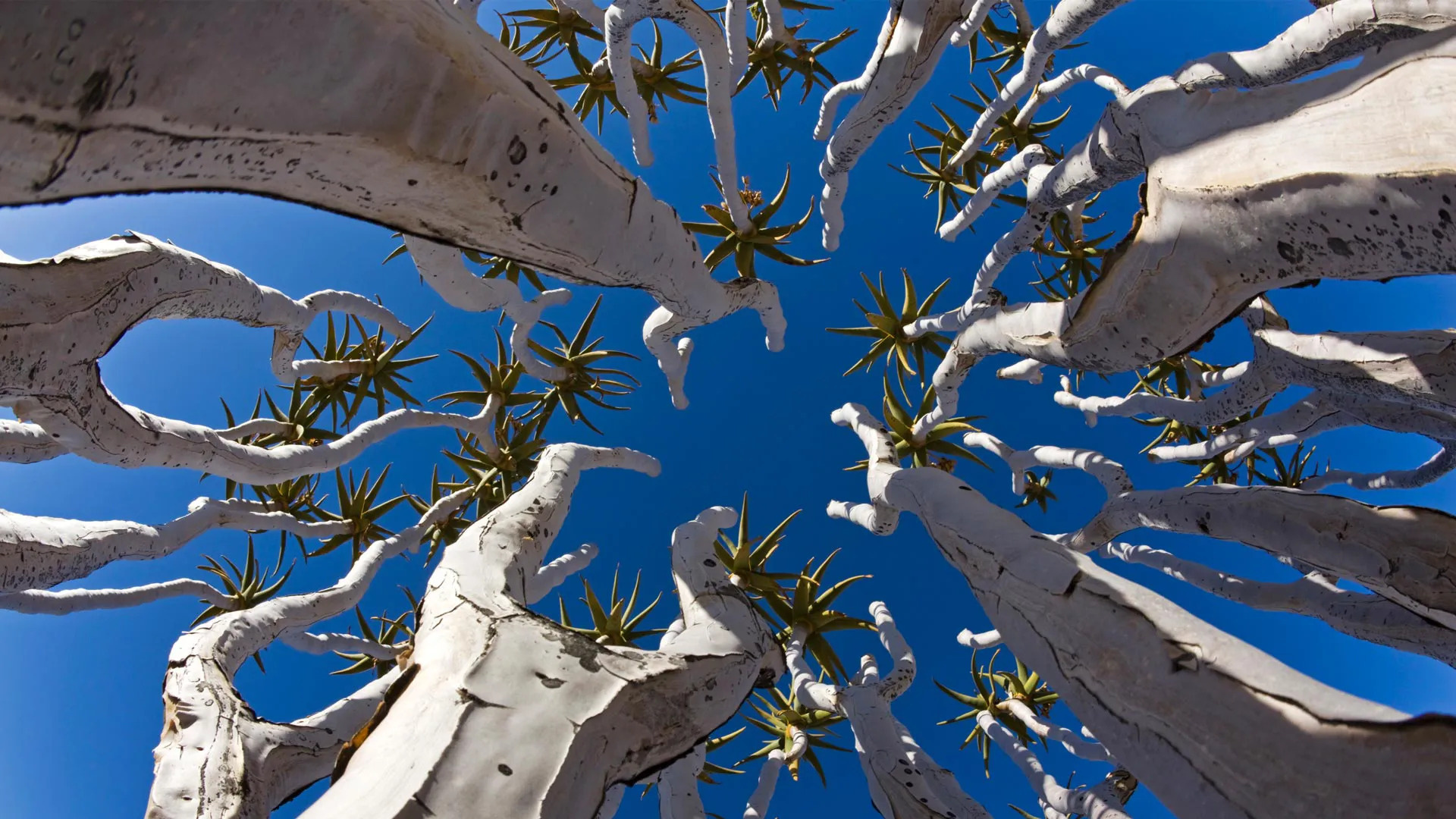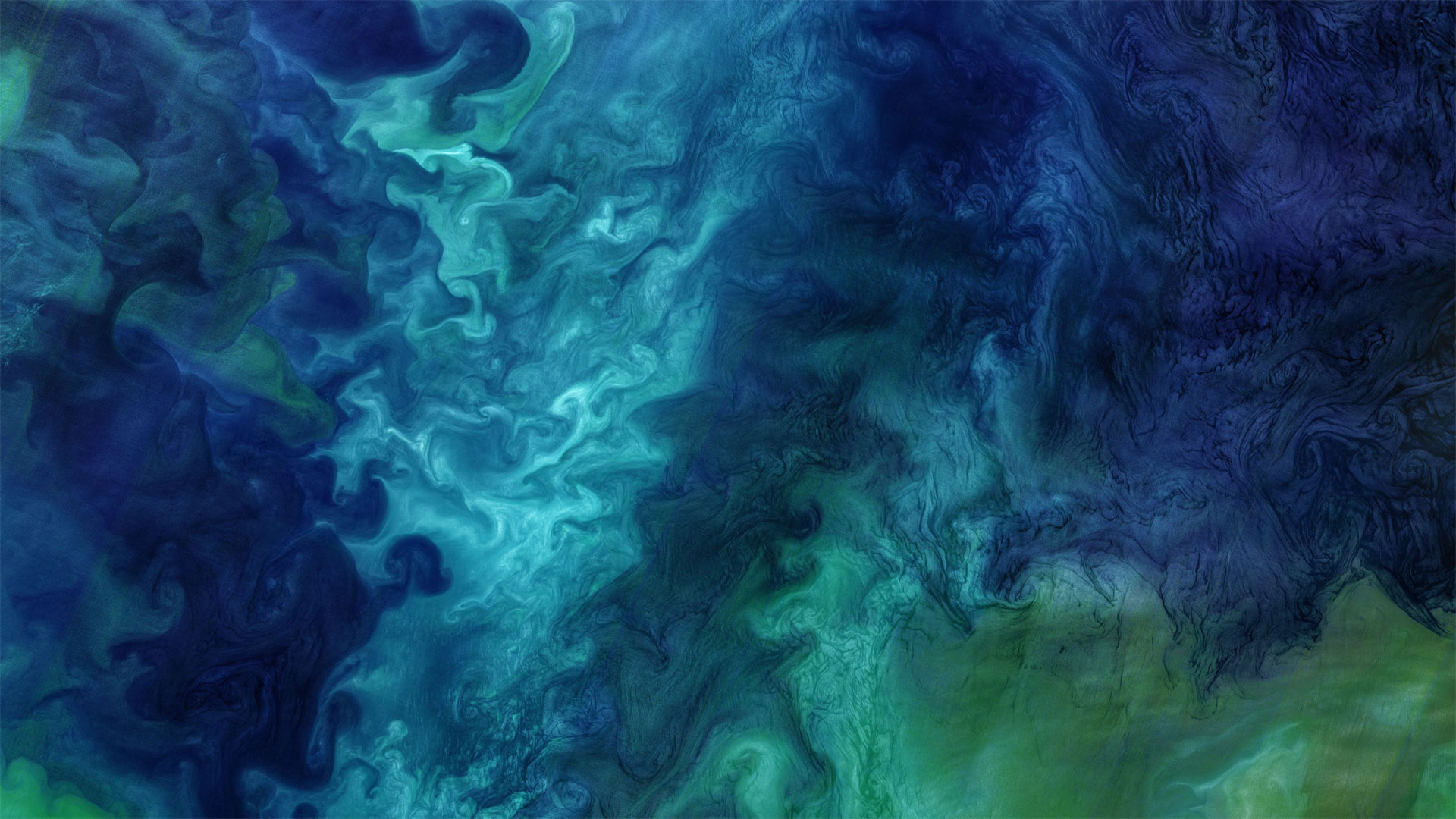标签 植物 下的文章
纳米比亚的植物 Quiver trees in Namibia (© Fotofeeling/DEEPOL by plainpicture)

纳米比亚的植物 Quiver trees in Namibia (© Fotofeeling/DEEPOL by plainpicture)
伸向天空 Stretching to the sky
纳米比亚的箭袋树
箭袋树是一种罕见的植物,生长于气候恶劣干旱的纳米比亚。有趣的是,箭袋树其实根本不是树,而是一种高度濒危的芦荟植物,属于多肉植物。当地土著桑人会将箭袋树的枝干掏空,做成箭袋在狩猎时使用,故名箭袋树。如果你在纳米比亚的冬季(5月到7月)参观箭袋树森林,就能欣赏到这些独特的植物开出鲜黄的花朵。
Quiver trees in Namibia
The quiver trees pictured on our homepage are uniquely suited to Namibia's hot, dry climate. They are not trees at all, but an endangered species of aloe plant. These succulents can grow up to 30 feet tall and live for 200 years. The name comes from the Indigenous San people who made quivers out of the plant's tube-shaped branches to hold their arrows while hunting. You can see scattered quiver trees across southern Namibia, but for sheer numbers, head to the Quiver Tree Forest, where more than 200 of these distinctive plants grow among dolerite rock formations outside the city of Keetmanshoop. In June and July, during Namibia's winter, you can see the plant's flowers in bright, yellow bloom.
楚科奇海的浮游植物水华,美国阿拉斯加州海岸附近 Blooms of phytoplankton in the Chukchi Sea off the coast of Alaska (© Norman Kuring/Kathryn Hansen/U.S. Geological Survey/NASA)

楚科奇海的浮游植物水华,美国阿拉斯加州海岸附近 Blooms of phytoplankton in the Chukchi Sea off the coast of Alaska (© Norman Kuring/Kathryn Hansen/U.S. Geological Survey/NASA)
什么生长得这样茂盛? What's blooming so brightly?
楚科奇海浮游植物的大量繁殖
在这张酷酷的照片中,数百种深浅的蓝色被大理石镶嵌在一起。不,这不是一件现代艺术作品,它是大自然的杰作。这是一张卫星照片,照片中的浮游植物在阿拉斯加附近盛开,凉爽、咸的楚科奇海与靠近海岸的温暖、新鲜的海水混合在一起。
但究竟什么是浮游植物?它们是微小的太阳能生物,漂浮在海面附近,随洋流漂流。事实上,它们的名字来源于希腊语中植物的“phyton”和流浪者或漂泊者的“planktos”。对于生活在海洋和河口的各种生物来说,浮游植物既美味又营养,对地球上的每一个人都至关重要:浮游植物的光合作用约占世界光合作用的一半,是吸收二氧化碳和释放氧气的太阳能过程。
今天我们谈论浮游植物是为了纪念地球科学周,这是一个鼓励我们所有人学习甚至献身于地球科学的国际活动。今年的主题是“地球科学促进可持续发展世界”,强调科学在维持我们的星球上的作用。所以,是时候掸掉显微镜上的灰尘,参观当地的科学博物馆,或者也许只是了解更多关于美丽的旋转浮游植物的知识。
Blooms of phytoplankton in the Chukchi Sea
Hundreds of shades of blue are marbled together in this cool shot. No, it's not a work of modern art, it's right off the brush of nature. This is a satellite photo of phytoplankton blooming near Alaska as the cool, salty Chukchi Sea mingles with warmer, fresher water closer to shore.
But just what are phytoplankton? They're microscopic sun-powered organisms that float near the surface of the ocean, drifting with the currents. In fact, their name derives from the Greek 'phyton' for plant and 'planktos' for wanderer or drifter. Delicious and nutritious to various creatures living in oceans and estuaries, they're also vital to everyone on Earth: Phytoplankton are responsible for about half of the world's photosynthesis, the sun-powered process that takes in carbon dioxide and releases oxygen.
We're talking phytoplankton today in honor of Earth Science Week, an international event encouraging all of us to learn about or even devote our life to the Earth sciences. This year's theme is 'Earth Science for a Sustainable World,' emphasizing science's role in sustaining our planet. So, time to dust off that microscope, visit your local science museum, or perhaps just learn more about beautiful, swirling phytoplankton.